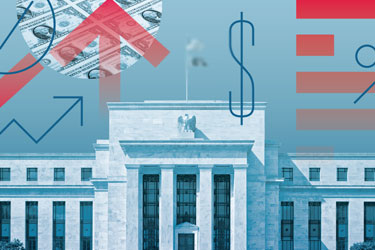Australian Fed's Considerations and International Comparisons
Australian Fed President's Policy Stance
In a speech in Sydney, Australian Federal Reserve President Bullock emphasized that the central bank will work to keep unemployment low if inflation is “indefinitely” above its target level. At the same time, she warned households and businesses that a slowdown in interest rates is still some time away. The Australian Federal Reserve's rate-setting committee is wary of upside risks to inflation, and monetary policy will need to remain “sufficiently restrictive” until the Consumer Price Index (CPI) is moving sustainably towards its 2% - 3% target. Australia's core inflation has been well above this range since 2021, and although it has fallen from a peak of 3.9%, it remains worryingly high.
The pitfalls of high inflation and strategies to deal with them
Bullock notes that high inflation will eventually require counter-inflation, which could impose long-term costs on households through higher unemployment. The Federal Reserve Board of Australia is seeking to reduce inflation within a reasonable timeframe while maintaining recent growth in Australia's labor market as much as possible, with the unemployment rate currently at a low 4.2%. She emphasized that the full employment goal is not achieved by keeping inflation above the target level indefinitely. Bullock's speech focused on the pitfalls of prolonged high inflation and the disproportionate harm that the current situation is doing to lower-income earners and young Australians, reiterating the need to overcome this problem.

Comparison with other central bank policies
In the international context, central banks in countries such as New Zealand and Canada have begun to cut interest rates, and the Federal Reserve is expected to initiate monetary easing this month. Australia, on the other hand, has been the outlier, raising interest rates less than other countries in order to preserve job growth during the 2022 - 23 tightening cycle. The Australian Federal Reserve has raised its cash rate to a 12-year high of 4.35 percent, about 1 percentage point lower than in the United States. Bullock spoke after the speech about New Zealand's policy being “a little bit more restrictive” than Australia's and said it may have to impose more restrictions on the economy if inflation doesn't fall.
Financial Market Expectations and Central Bank Response
Financial markets still expect the Australian Federal Reserve to begin cutting interest rates later this year, but central bank officials have rejected that expectation. Bullock said it was “too early to consider a rate cut” and reiterated comments made at a press conference last month. She said the committee will respond accordingly if economic conditions don't develop as expected, but will not cut rates in the near term if the economy develops broadly in line with expectations. The current restrictive policy settings are working to bring supply and demand more in balance, although domestic capacity pressures continue to keep prices high.
Status and outlook for the Australian economy
The main drivers of the current rise in inflation are housing costs and market services, which stood at 5.3% in the year to the second quarter. Data released on Wednesday showed that Australia's economic growth remained subdued in the three months to June, with consumers underperforming in the face of stubborn inflation. The central bank sees the second quarter as the nadir of the slowdown and expects growth to pick up in 2025.
MORE FROM WIRED

- Building a Low-Cost Investment Portfolio with Index Funds

- Gucci's First-Half Sales Plunge Nearly 20% as Kering's Earnings Hit Red Lights

- Changes In The ETF Market: Rising Fees Raise Investor Concerns
- Sep,02,2024

- The Impact of the U.S. Election on the Consumer Market and Retailers' Responses
- Aug,28,2024

- Uncertainty and Market Forecasts on Oil Price Trends
- Aug,21,2024

- Market Jitters: Nikkei Plunges Amid Global Economic Concerns
- Aug,14,2024

- The Impact of the Fed's Successive Interest Rate Hikes on Global Financial Markets
- Aug,07,2024